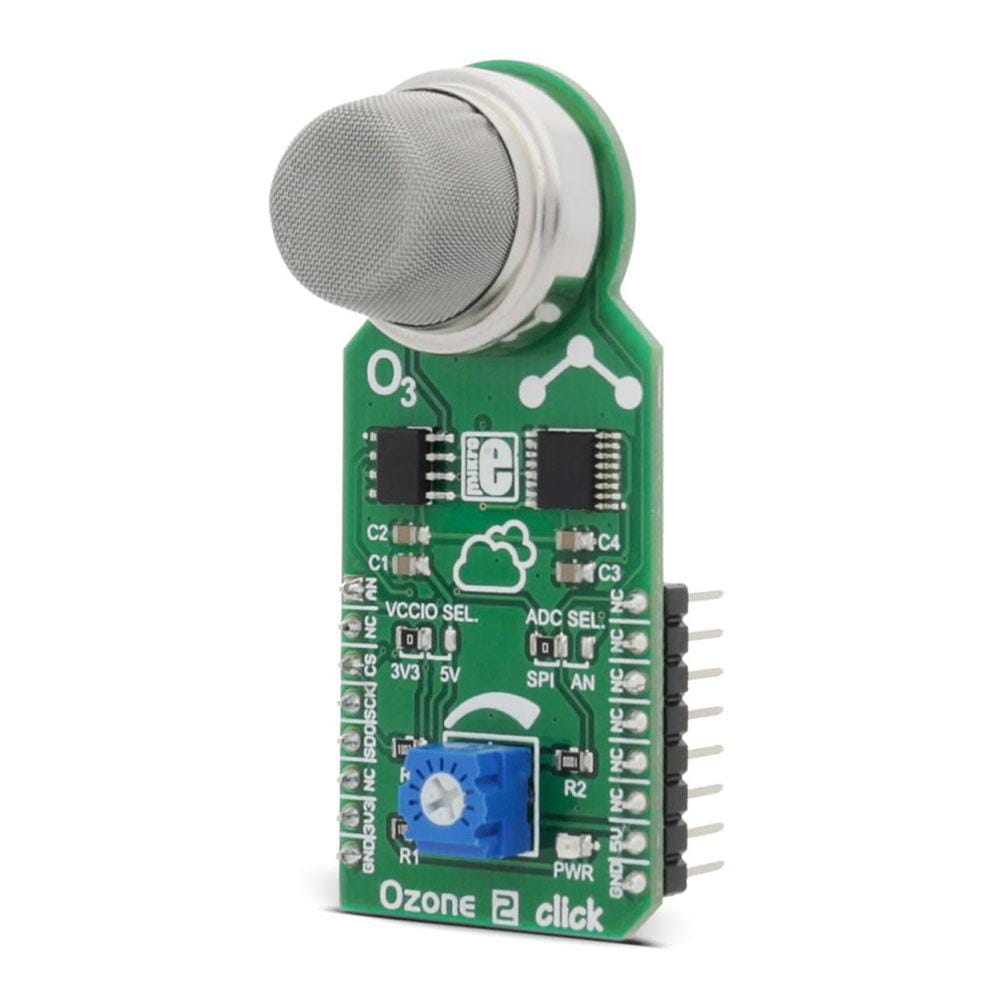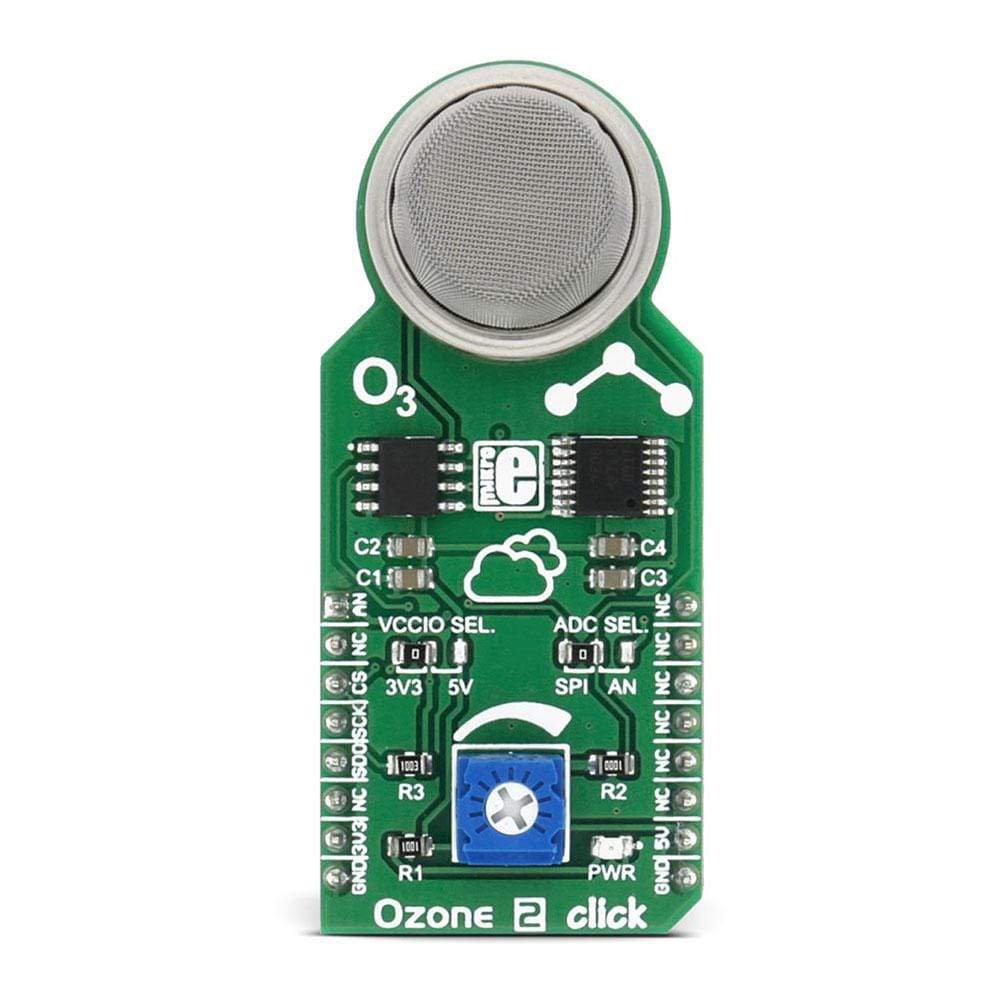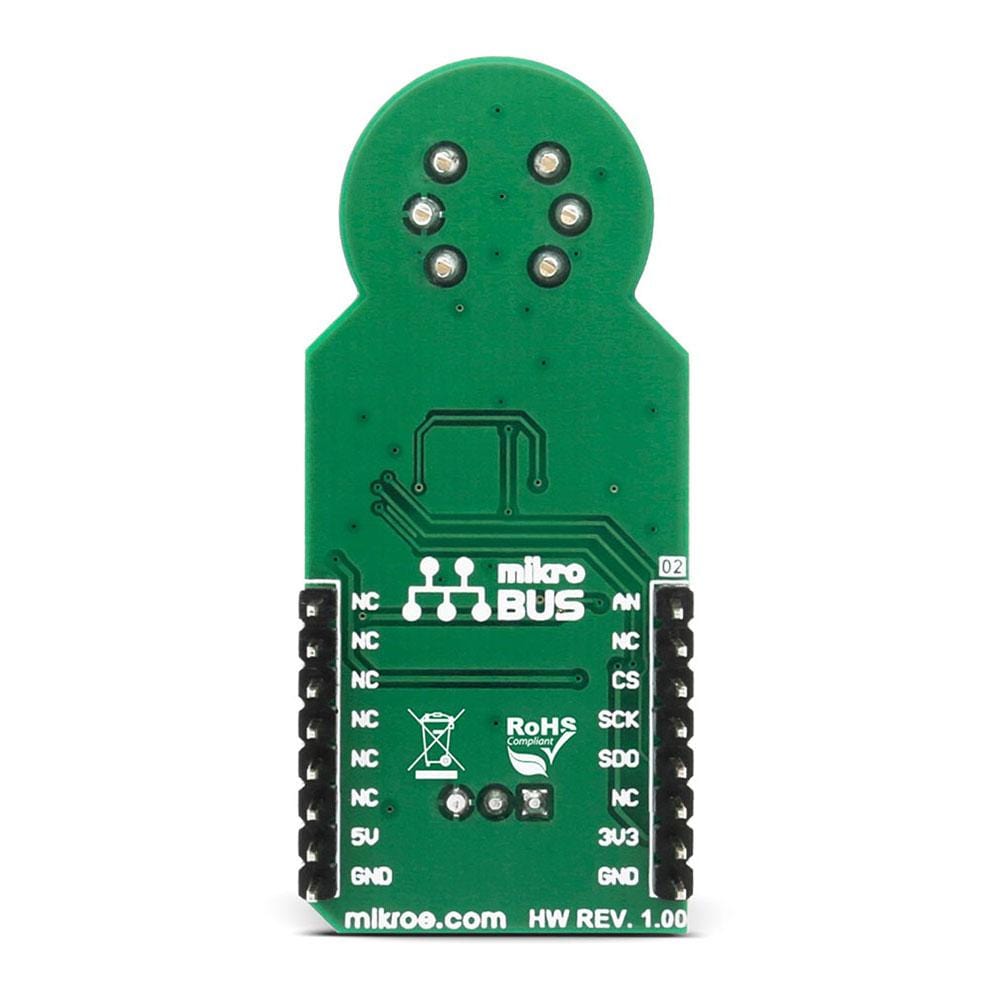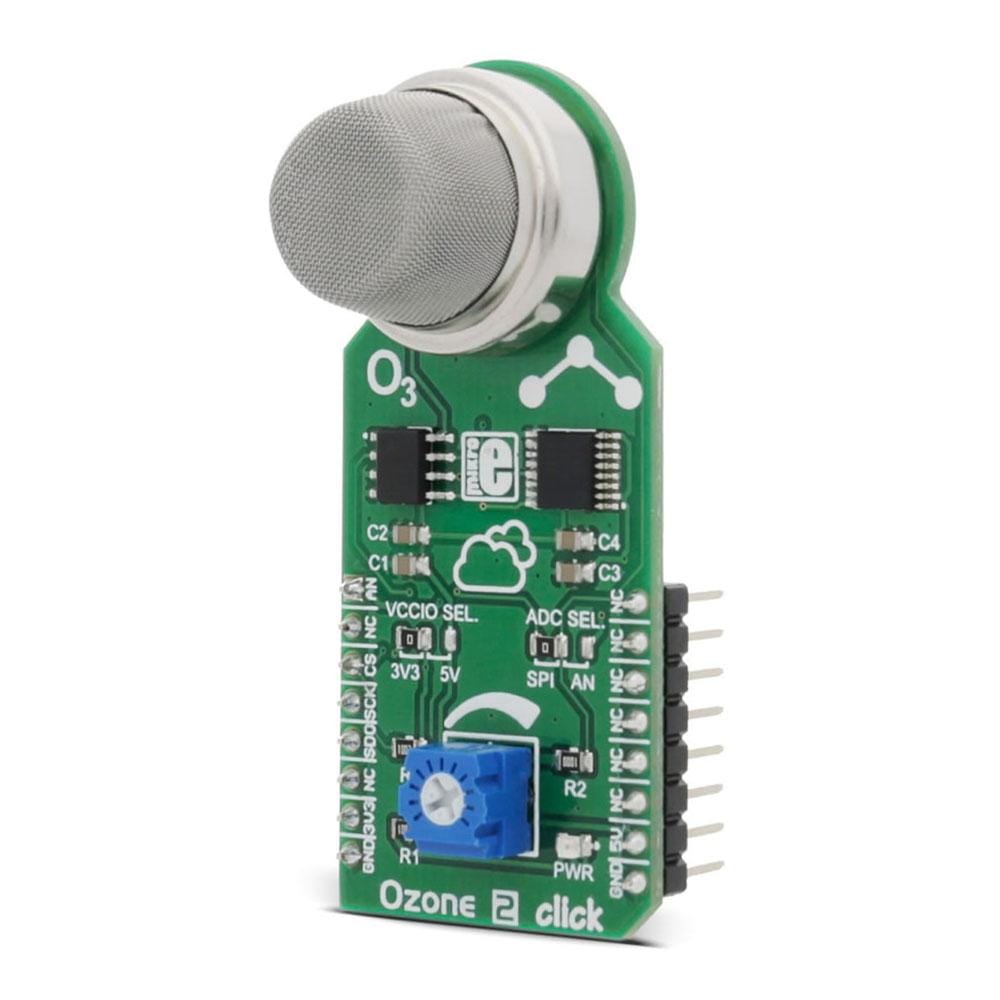
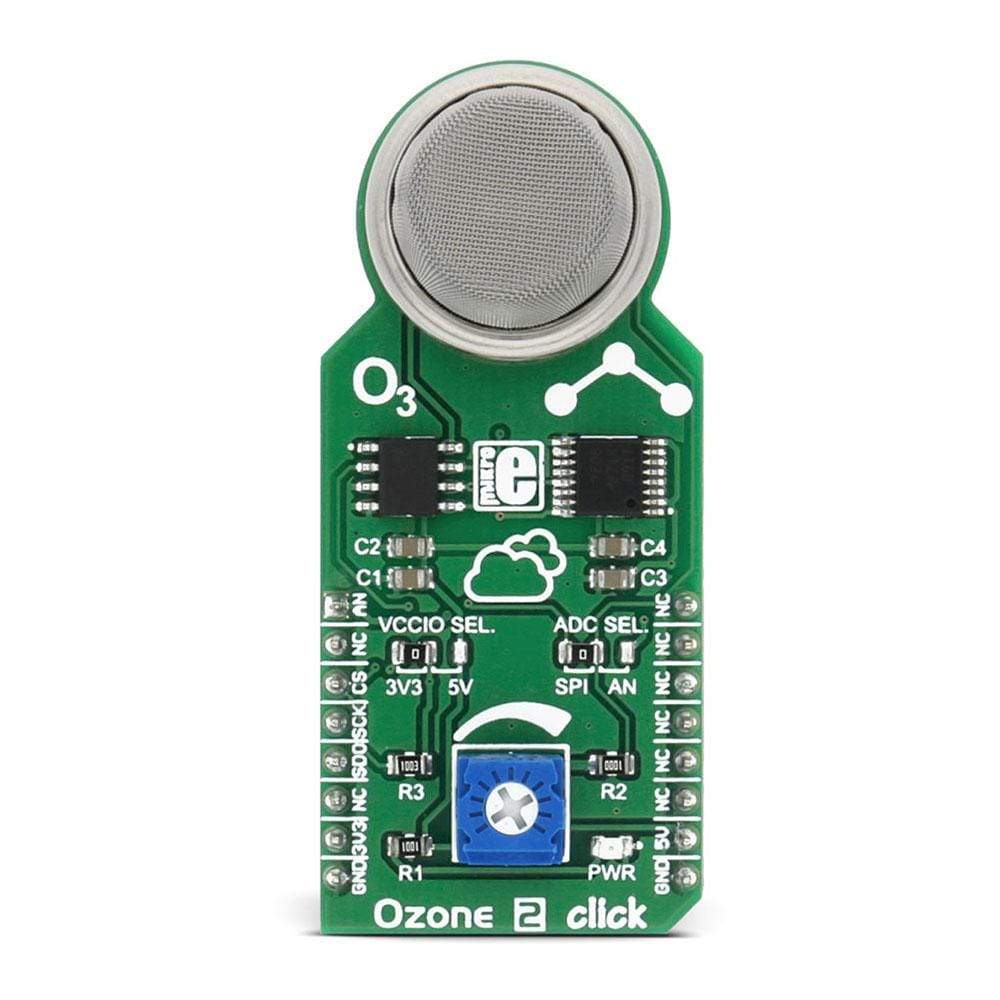
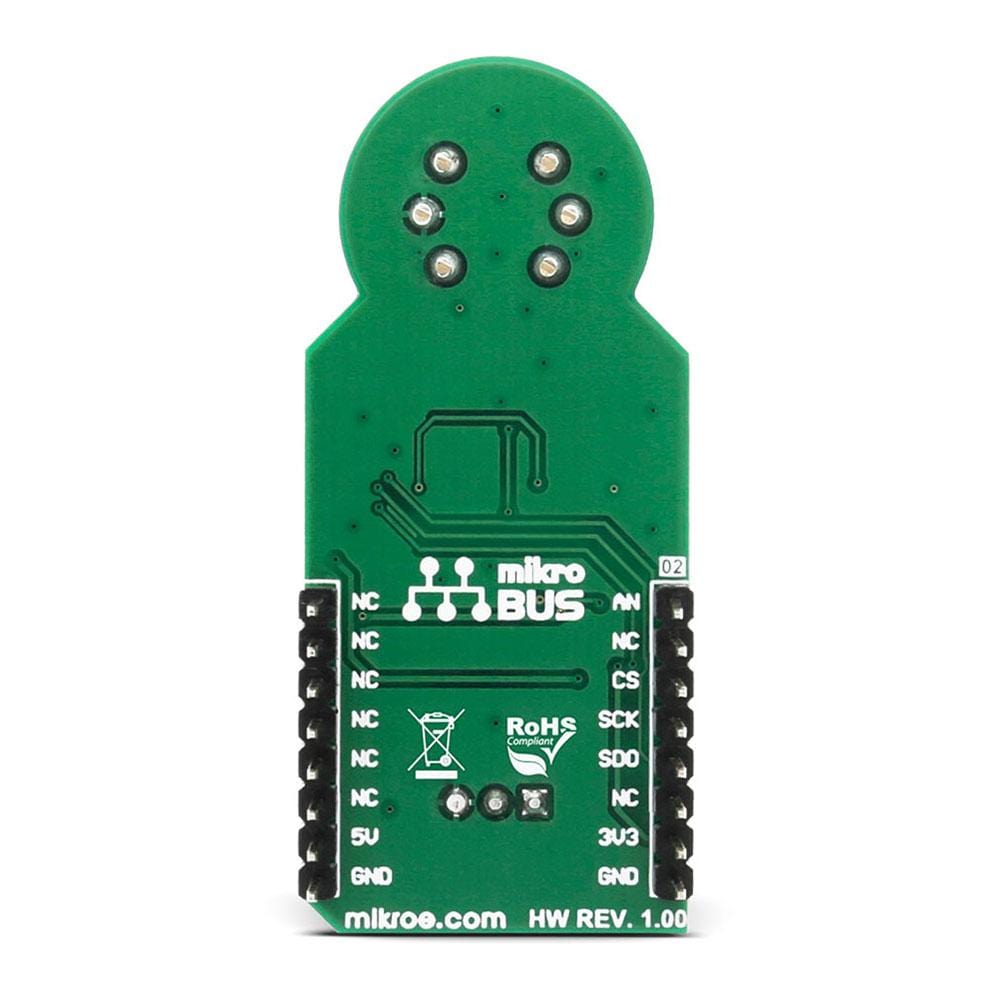
Overview
The Ozone 2 Click Board™ is based on the Winsen MQ131 sensor for Ozone (O3). The sensor outputs an analogue voltage, which is converted by the onboard MCP3551 22-bit ADC converter or it is sent to the microcontroller via AN pin on the mikroBUS, depending on the position of ADC SEL. jumper.
The Ozone 2 Click Board™ is designed to run on 5V power supply. It communicates with the target microcontroller over SPI interface or AN pin on the mikroBUS line.
Downloads
Das Ozone 2 Click Board™ basiert auf dem Winsen MQ131-Sensor für Ozon (O3). Der Sensor gibt eine analoge Spannung aus, die vom integrierten 22-Bit-ADC-Wandler MCP3551 umgewandelt oder über den AN-Pin auf dem MikroBUS an den Mikrocontroller gesendet wird, je nach Position des ADC SEL.-Jumpers.
Das Ozone 2 Click Board™ ist für den Betrieb mit 5 V-Stromversorgung ausgelegt. Es kommuniziert mit dem Zielmikrocontroller über die SPI-Schnittstelle oder einen AN-Pin auf der MikroBUS-Leitung.
| General Information | |
|---|---|
Part Number (SKU) |
MIKROE-2767
|
Manufacturer |
|
| Physical and Mechanical | |
Weight |
0.018 kg
|
| Other | |
Country of Origin |
|
HS Code Customs Tariff code
|
|
EAN |
8606018711543
|
Warranty |
|
Frequently Asked Questions
Have a Question?
Be the first to ask a question about this.

